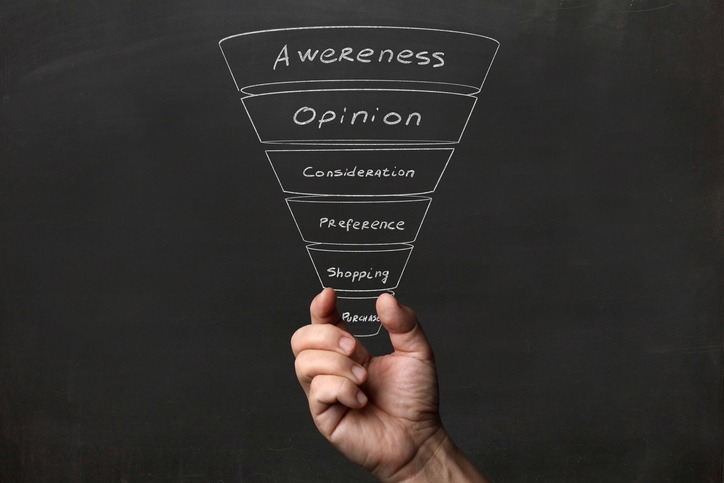Is your digital content strategy driving revenue?
Here are seven steps to ensure your work connects to the bottom line.

With 24/7 access to online reviews, videos, media coverage and more, today’s path-to-purchase is unmistakably customer driven.
Whether consumer-facing or business-to-business (B2B), buyers tend to gather information, evaluate various options and make preliminary selections based on their digital networks and resources. According to Forrester Research, “The number of interactions required to make buying decisions significantly increased in the past two years, from 17 in 2019 to 27 in 2021, indicating a new level of attention and due diligence for purchases during the pandemic.”
Pivoting our marketing strategies to match this transformed consumer journey has not been easy—especially in markets complicated by the pandemic. So, knowing that consumers strongly prefer researching options on their own, how can companies build awareness and influence purchasing decisions today?
The answer may lie with your content.
Marketing automation tools continue to gain traction. And while delivering information in real-time to consumers based on their actions is valuable, it’s just as critical to understand your audience and to produce content they will find interesting. Otherwise, even the best marketing automations will fall flat.
To successfully launch an integrated digital content program aimed at moving propects through a path-to-purchase, consider these steps:
1. Research and identify your audience and their key drivers.
- Do you understand your customers’ challenges, needs and motivations when making purchasing decisions? Which digital channels do they use and trust most when researching products or services? Beginning with insights will help position your company and inform the type of content you create and how it’s promoted.
2. Determine communication objectives, and develop brand messages.
- What differentiates your company from its competitors? Is the messaging believable and aligned with your brand? Use your market research to drive the development of value statements—all connecting back to your core brand identity. This helps maintain brand consistency and improve the efficacy of your marketing content.
3. Optimize your website and online ecosystem.
- Have you made it easy for buyers to find engaging content on the website and share it with their networks? Can they quickly connect with a real person to ask questions? Your website should funnel online traffic and capture viable leads. It’s where you can nurture prospects from leads to customers, and passive customers to engaged promoters of your brand.
4. Develop digestible, relevant and compelling content.
- Do you know what motivates your buyers? Does your content express your company’s clear point of view on industry trends or the challenges your customers face? Remember that great content is produced to serve as a resource rather than to promote your business. It’s important that your content strategy allows you to repurpose your content and demonstrate credibility for your business.
5. Extend content with a connection strategy.
- Have you mapped out the plan to capture your audience’s attention with your premium content? It’s time to extend your content through an integrated multi-channel connection strategy using the paid, earned, shared and owned (PESO) promotional model. Both inbound and outbound tactics should include a strong call-to-action that leads prospects back to your website.
6. Analyze website visitors’ interests and nurture sales leads.
- Do you have tools in place to track website visitors and their actions? How will you use that data to nurture prospects and establish relationships? Monitoring your prospects’ online behavior and tracking through your CRM system will allow your sales team to respond effectively with follow-up content or offers. Marketing automation will help you customize content and automate the timing of all your marketing communications efforts.
7. Continuously measure and improve campaigns.
- Can you identify the communications strategies that drove results? Can you recreate their successes? Key performance indicators you should consider measuring include website, content, social media, PR, SEO, digital ads and emails. As you dig into this data, you’ll see what type of content is performing well and hone your strategy moving forward.
Whether its purpose is promotional, educational, motivational or loyalty-building, taking a strategic integrated approach to content enables brands to boost campaign results—and positively impact the bottom line.
Amy Fisher is vice president, technology for Padilla, a partner in The Worldcom Public Relations Group.







